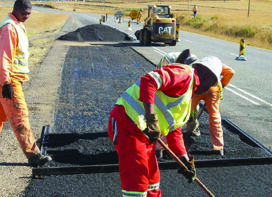 Our government recognizes that road accidents have now become a major public health issue, and the victims are mainly the poor and vulnerable road users. Road safety needs to be addressed on a holistic basis regardless of jurisdictions, the Central and State Governments have.
Our government recognizes that road accidents have now become a major public health issue, and the victims are mainly the poor and vulnerable road users. Road safety needs to be addressed on a holistic basis regardless of jurisdictions, the Central and State Governments have.
The Government of India, through the National Road Safety Policy, states its commitment to bring about a significant reduction in mortality and morbidity resulting from road accidents. Iqbal Singh Jagdeva, Managing Director, Turbo Consultancy Services Pvt Ltd, feels that driver education and transparency in enforcement are important factors.
Speeding is a major factor in traffic deaths and injuries. The role of speeding in crashes is described in terms of its effect on the driver, the vehicle, and the road. Excessive speeding reduces the amount of time the driver has to react in a dangerous situation to avoid a crash, increases vehicle stopping distance, and reduces the ability of road safety structures (such as guardrails, impact attenuators, crash cushions, median dividers, and concrete barriers) to protect vehicle occupants in a crash.
Enforcement and driver education
After a decade, speed limits across the city roads have been revised. For the first time, two-wheelers and local roads will also fall under the purview of these speed guidelines.
Joint CP (Traffic), Delhi, Meenu Chaudhary said that the Delhi Traffic Police has notified maximum speed limit for different categories of motor vehicles plying on city roads. The revision has been done keeping in view the traffic scenario, road safety and other key developments in road infrastructure.
According to road safety experts, enforcement will be a key component in relation to the revised speed limits along with the utilisation of road safety and engineering techniques.

Last revised in 2011
“The last revision of speed limits on majority of roads was undertaken in 2011. Thereafter, in 2017 and 2019, maximum speed limit for a few roads was further revised,” said Ms.Chaudhary.
Professor P.K. Sarkar, road safety expert and member of Bureau of Indian Standards, said that empirical studies had shown an increase of one kilometre in the permitted speed limit linked to a 2 to 3% increase in risk of accidents.
“One hopes that the speed limits have been revised where safety audits of the stretches concerned allow this. In Europe, for instance, speed up to 50 kmph is allowed outside urban areas and are restricted to 30 kmph within.”

More transparency
A traffic policeman said that overspeed violation detector (OSVD) system on high-speed corridors like Ring Road, Delhi-Meerut Expressway and Outer Ring Road has been installed.
“We are moving towards automated traffic challan generation system to bring more transparency in the system. The revised speed limits have been implemented and new challans have been issued accordingly,”
For the first time, speed limit for two-wheelers, which constitute the largest chunk of Delhi’s vehicular population, has also been fixed in the city limits.
The Capital’s vehicular population saw an addition of more than 5 lakh vehicles till March 31 last year, registering an increase of over 4% according to the Delhi Economic Survey 2020-21.
According to the survey, the total number of vehicles registered in the city went up to 1.18 crore from 1.13 crore in 2019-20 and consists of almost 67% or 79.59 lakh two-wheelers followed by around 28% or 33.11 lakh cars and four-wheelers.
There were some variations in the speed limit at some stretches which have been corrected and speed limits have been made uniform, said the traffic police.
According to Chaudhary there was a need to make speed limit uniform on Delhi roads as far as possible. Therefore, a revision of the existing speed limits was felt necessary.
Another police officer said that during the revision of speed limits, there have been no major changes in the limits in all categories of vehicles in view of road safety; however, this time the maximum speed limit for the loops of flyovers has been notified as 40 kmph.
Road safety expert S.M. Sarin said that operating speed was also contingent upon the road environment. “The speed limit cannot practically be uniform across an entire stretch which may see patches of built-up area on some parts and desolation on others, for example, on the Outer Ring Road, a maximum speed of 70 kmph seems completely okay. But, it will have to be reduced when one enters a congested part of the city alongside the same stretch. Enforcement and driver education are going to play a major part in relation to the revised limits.”
Relief for cab drivers
Also, now the maximum speed limit for taxis and cabs is notified at par with private cars on these roads, as per the notification which, according to taxi operators, is a major relief for both drivers as well as the passengers being ferried by them.
Always speak up for your safety
- The faster the vehicle is going, the harder it is to stop.
- Remember that speeding can be dangerous and cost money.
- Watch for speed limit signs and let the driver know when the number changes
- Help the driver look for dangers in the road.
- Ask questions about driving and how it’s done. This lets the driver know they are setting the example.
- Know the law – Reckless driving is against the law, and is defined as driving in a way that shows you really don’t care about the safety of people or property
 TrafficInfraTech Magazine Linking People Places & Progress
TrafficInfraTech Magazine Linking People Places & Progress


